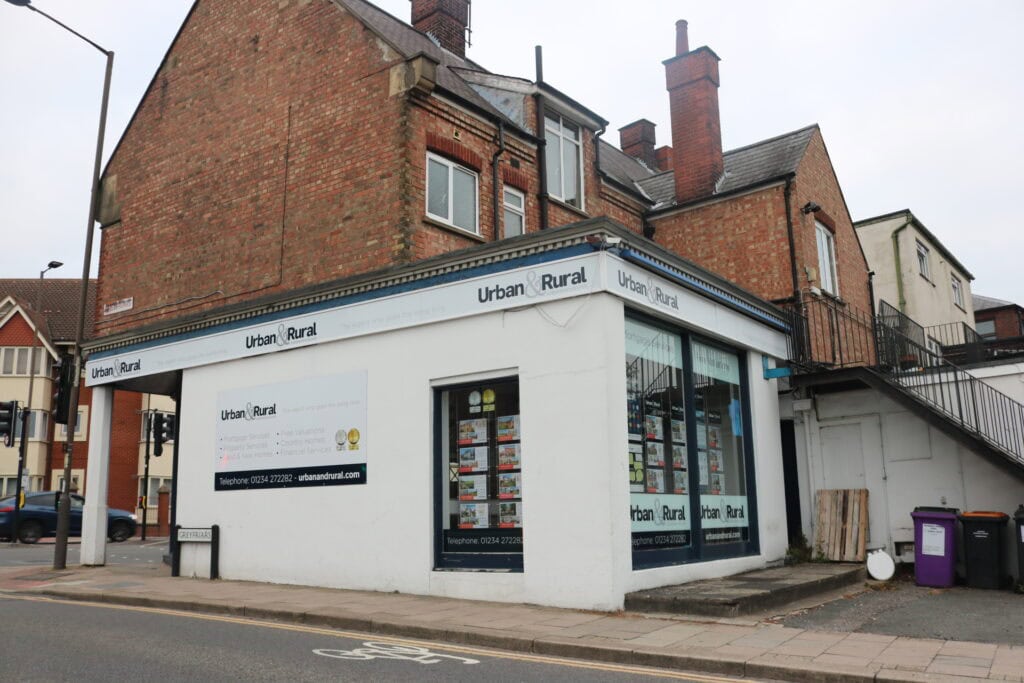Get Expert Investment Financing
- Matched with investor-friendly lenders
- Fast pre-approvals-no W2s required
- Financing options fro rentals, BRRRR, STRs
- Scale your portfolio with confidence
Educational Content | Not Financial Advice | Connect with Licensed Professionals
Real estate investors face a critical decision point when residential cash flow plateaus: stay comfortable with modest returns or transition into commercial properties that can multiply portfolio value by 300% or more. In 2024’s repricing market, where commercial property values dropped 42% while creating unprecedented opportunities, savvy investors are positioning themselves for the next wealth-building cycle.
The transition from residential to commercial real estate represents more than a simple portfolio expansion. It’s a strategic shift from predictable monthly rents to building generational wealth through value-add and opportunistic investment strategies that can generate IRRs exceeding 15-20% annually.
Commercial real estate investment volumes fell 47% in 2024, creating a buyer’s market for prepared investors. Cap rates peaked at 6% for multifamily and 7% for retail properties, while office conversions present unique repositioning opportunities. This market correction eliminated weaker competitors while rewarding investors with capital and strategic vision.
Industrial and distribution properties lead recovery projections for 2025, offering stable cash flow during transition periods. Secondary markets, often overlooked by institutional investors, have emerged as “institutional goldmines” providing superior risk-adjusted returns without major metropolitan competition.
Key investment performance indicators reveal market stabilization:
| Metric | 2024 Performance | Recovery Outlook |
|---|---|---|
| Cap Rates | Peaked at 6-7% | Gradual decline expected |
| Transaction Volume | Down 47% | Bottoming out phase |
| Property Values | Declined 42% | Cyclical low established |
| NOI Growth | Market dependent | Selective improvement |
This data indicates 2024 represents a cyclical bottom, positioning prepared investors to capture significant upside as markets normalize.
Value-add investments target properties requiring operational improvements, lease restructuring, or moderate capital improvements. These strategies typically generate 12-18% IRRs by enhancing existing assets rather than ground-up development.
Successful value-add transitions focus on:
Opportunistic strategies target distressed assets, major repositioning projects, or development opportunities offering 18%+ IRRs. Current market conditions favor experienced investors who can execute complex transitions while competitors retreat.
Key opportunistic opportunities include:
For investors transitioning from residential properties, core-plus investments provide intermediate risk exposure while building commercial real estate expertise. These stable assets with enhancement potential offer 8-12% returns with lower execution risk.
Rising financing costs require strategic debt structuring. Lenders demand higher equity contributions (typically 30-40% down) while applying stricter underwriting standards. Successful investors secure financing through:
Traditional Lenders: Banks offer competitive rates for quality sponsors with proven track records, though approval processes have lengthened significantly.
Alternative Capital Sources: Debt funds and private credit providers fill gaps left by retreating institutional lenders, often with faster execution but higher spreads.
Seller Financing: Property owners motivated by tax deferrals may provide favorable seller financing terms, reducing third-party debt requirements.
Smart capital structuring maximizes returns while managing risk exposure. Successful transitions often utilize joint venture partnerships with experienced commercial operators, providing operational expertise while sharing investment requirements.
Consider establishing relationships with family offices or high-net-worth individuals seeking commercial real estate exposure but lacking direct investment experience.
Current financing environments require careful interest rate management. Successful investors either secure fixed-rate debt or utilize rate hedging instruments to protect against further increases. Conservative cash flow models should stress-test performance under 200-300 basis point rate increases.
Ongoing market volatility demands conservative underwriting using current valuations rather than trailing comparables. Build contingency reserves of 15-20% for unexpected capital requirements, lease downtime, or market delays.
Concentration risk multiplies during market transitions. Diversify across multiple markets, property types, and tenant credit profiles to stabilize cash flows during repositioning periods.
Identify target markets with strong fundamentals, analyze comparable transactions, and build relationships with commercial brokers and lenders.
Execute thorough financial and physical due diligence, secure financing commitments, and close on strategically selected properties.
Implement business plans through tenant improvements, lease restructuring, operational improvements, or physical renovations.
Monitor performance metrics, optimize operations, and identify additional acquisition opportunities using established market relationships.
Track success through key performance indicators:
Most commercial properties require $500,000 to $2 million in equity depending on property type and leverage. Joint ventures can reduce individual capital requirements while maintaining deal access.
Complete transitions from residential to stabilized commercial portfolios typically require 18-36 months, including market analysis, acquisition, and value-add implementation phases.
Key risks include higher capital requirements, longer lease-up periods, more complex tenant relationships, and greater market sensitivity to economic cycles.
The window for capturing 2024’s market repricing won’t remain open indefinitely. As transaction volumes begin recovering and institutional capital returns, entry pricing will increase substantially. Successful investors are positioning themselves now for the recovery phase.
Commercial real estate transitions require strategic planning, adequate capital, and experienced guidance. The complexity increases significantly compared to residential investments, but so do the wealth-building opportunities for prepared investors.
Connect with commercial real estate lenders who understand investment property transitions and can structure financing that supports your growth objectives while managing risk exposure.
Don’t let this historic market opportunity pass while others build tomorrow’s wealth today. Your commercial real estate portfolio begins with taking action on market conditions that may not repeat for another decade.
This article is for educational purposes only and does not constitute financial, legal, or investment advice. Mortgage rates, terms, and requirements vary by lender and individual circumstances. Always consult with qualified, licensed mortgage professionals before making financial decisions. REInvestorGuide.com may receive compensation from featured lenders and service providers.
Our advise is based on experience in the mortgage industry and we are dedicated to helping you achieve your goal of owning a home. We may receive compensation from partner banks when you view mortgage rates listed on our website.


